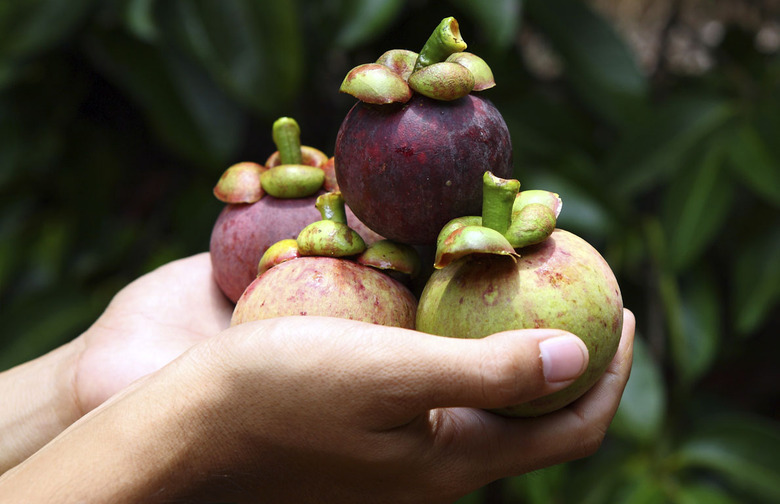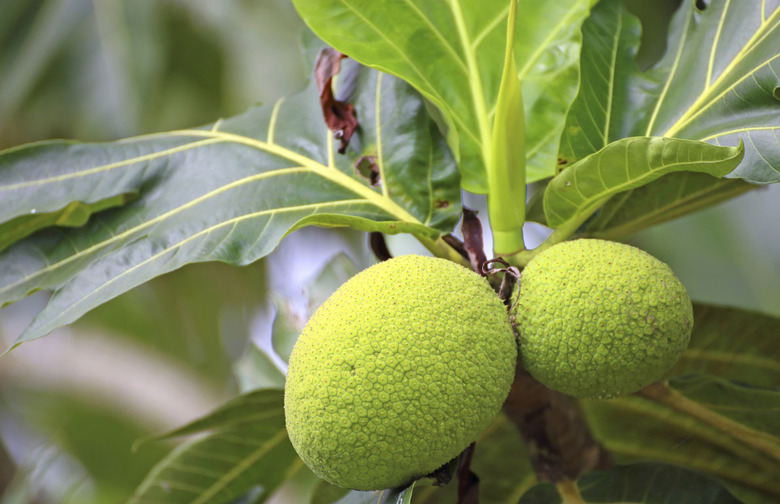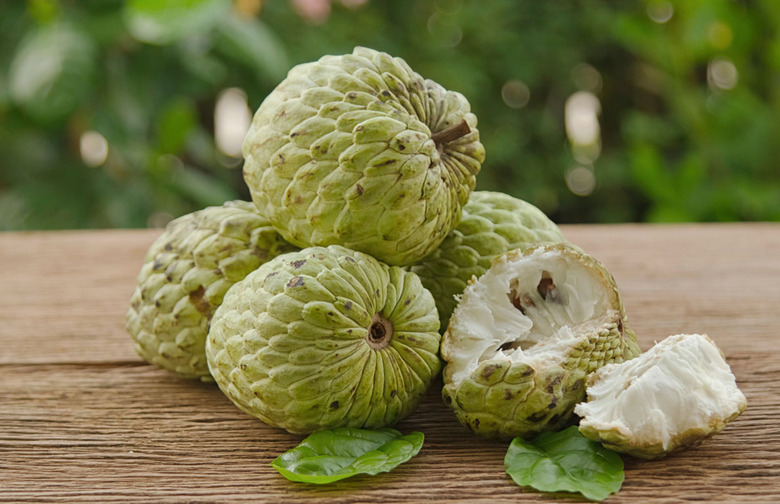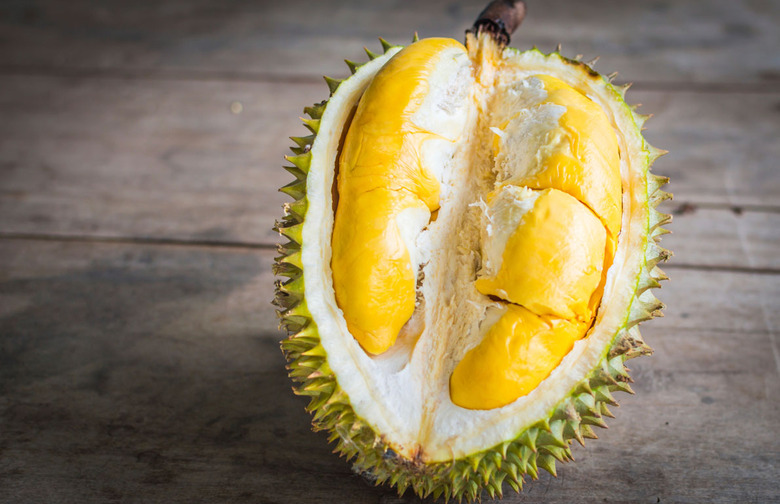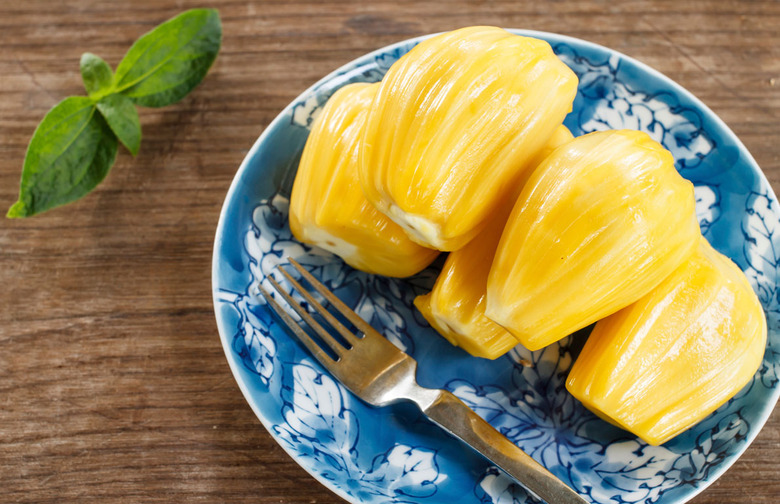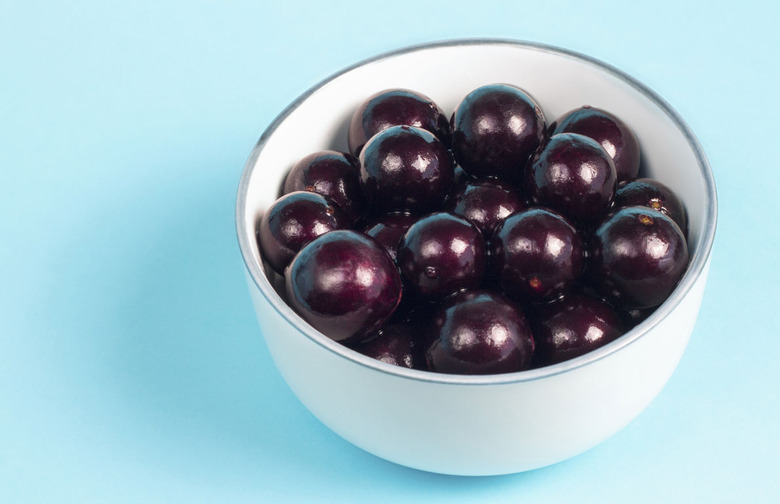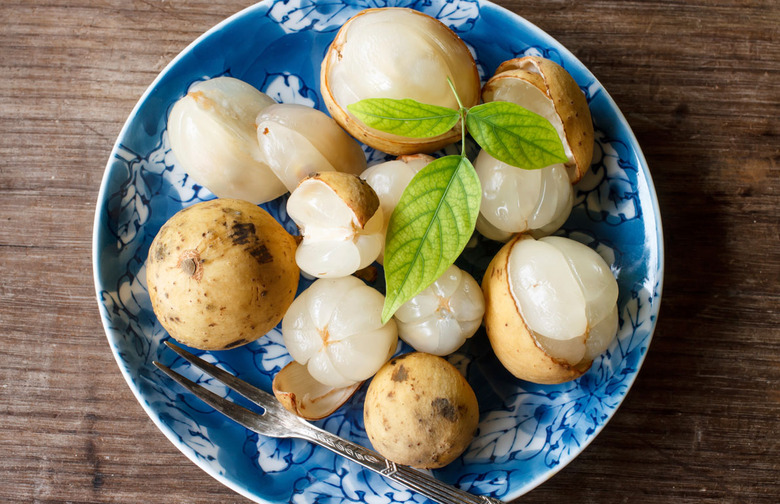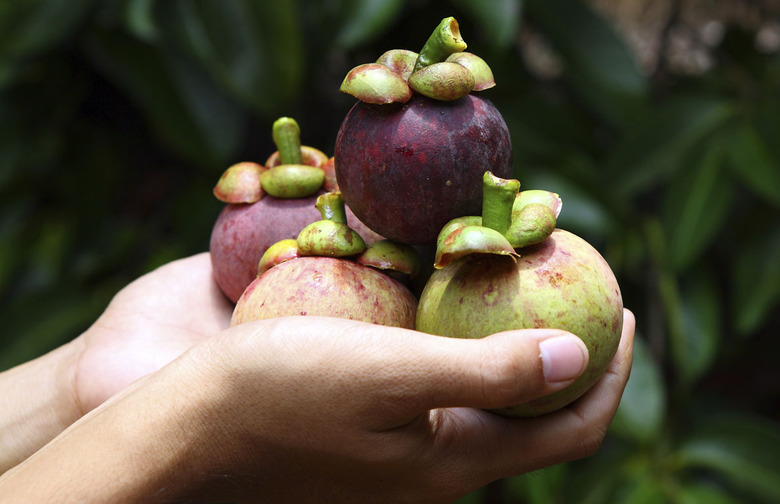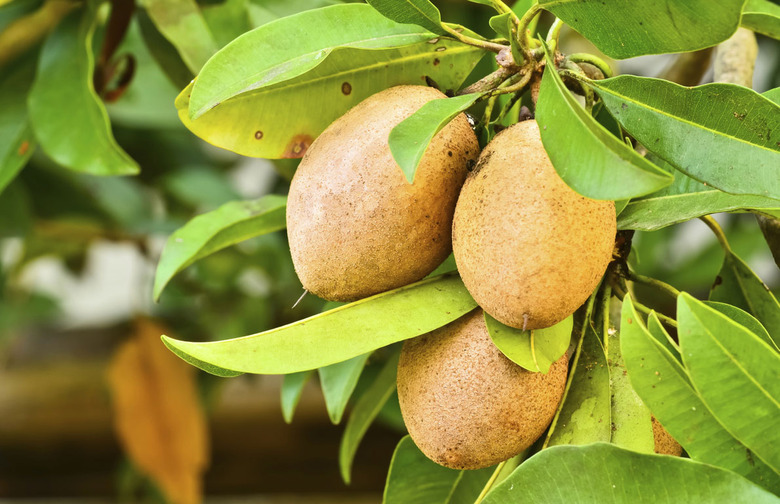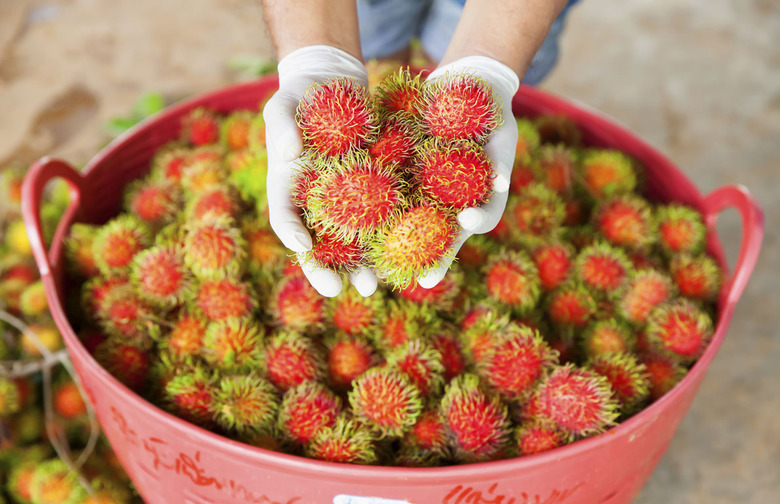10 Exotic Fruits Worth Traveling For
An apple a day might keep the doctor away in America, but the rest of the world enjoys an immense variety of other fruits for both health and flavor.
Breadfruit
Breadfruit can be found throughout much of Southeast Asia, South India, and the Pacific Islands, and in parts of Africa and the Caribbean. About the size of a football and weighing as much as seven pounds, breadfruit has a lumpy green exterior and white, starchy flesh. The fruit earned its name from its incredibly bland taste, which has been compared to that of undercooked potatoes. But don't let that deter you; jackfruit is said to be the "food of the future" and has also been called a "wonder food." The fruit is packed with protein and carbohydrates, and it is rich with vitamins and nutrients, including fiber, potassium, phosphorous, calcium, and copper, among others. Scientists have even gone so far as to say that the breadfruit, which is mostly eaten cooked, could play an integral part in finding the solution to world hunger.
Custard Apple
The custard apple has no similarity in taste or texture to the apples we know and love. This tropical fruit has a hard, green exterior that peels away to reveal a velvety, creamy flesh, with some small seeds and a sweet smell. Custard apples must be eaten when they are ripe as they spoil quite quickly. As they ripen, custard apples' exteriors tend to blacken, and like an avocado are often soft when you squeeze them. The custard apple is also highly nutritious and is rich with vitamin C, vitamin A, potassium, fiber, and other nutrients. From its texture to its taste, the custard apple is a truly beautiful fruit.
Durian
If there is any food famous for its putrid smell, it is durian, a tropical fruit that's native to Indonesia and Malaysia. Durian is soft in texture and tastes surprisingly good to those who are able to get beyond the odor, which has been likened to that of a heap of garbage drenched in gasoline. Anthony Bourdain once brilliantly said that after eating a durian, "Your breath will smell as if you've been French-kissing your dead grandmother." Durian is so famous for its hard-to-handle smell, in fact, that it is actually banned on public transport in many places, including taxis in Thailand and trains in Singapore. Durian is a fruit many travelers try in their attempts to be more adventurous, daring eaters.
Jackfruit
Jackfruit, which is believed to have originated in India, comes from the same family as breadfruit but is a different species. Jackfruit is the largest tree fruit in the world, and can weigh up to about 100 pounds. This massive fruit has a prickly, greenish-yellowish exterior and white flesh inside, and like breadfruit, it is said to have powers to help stop world hunger, as researchers have said that jackfruit can be a replacement from wheat, corn, and other crops that are threatened by climate change. Jackfruit is highly nutritious and contains protein, iron, potassium, and calcium. Jackfruit, which has a distinct aroma and a musky smell, is known to taste somewhat bland with a small hint of flavor to it that some have compared to juicy fruit.
Jabuticaba
Native to several South American countries, including Brazil, Argentina, Peru, Paraguay, and Bolivia, jabuticaba grow from the trunk of the tree. The fruit, which is purple-black with white or rosy pink flesh and a sweet taste, has been compared to overgrown grapes — and, as with grapes, can be used to make jellies as well as juice or even wine.
Langsat
Langsat is a small, orb-shaped fruit that originated in Malaysia and is now found across Southeast Asia. Its skin, similar in color to that of a potato, can be easily removed to reveal a white, translucent flesh. Langsat taste like a bittersweet grapefruit.
Mangosteen
Found in Indonesia and across much of Southeast Asia as well as in Colombia, mangosteens have a thick, eggplant-colored shell that can be difficult to open without a knife (and that might stain your fingers purple). The juicy, white, fragrant flesh inside is arranged like segments of a clementine, and has a well-balanced sweet and citrus-like flavor.
Salak
When traveling through Indonesia, Andrew Zimmern was introduced to salak, also known as snake fruit or snakeskin fruit. The fruit earned its name given its snakeskin-like exterior, which you peel away to reveal a white-colored fruit inside. Zimmern wasn't a happy camper after biting into the snake fruit, saying it had a "sour, acrid, underarm smell" and tasted like bad cheese. To me, snake fruit tastes more like a mild green Jolly Rancher.
Sapodilla
Native to Mexico, Central America, and the Caribbean, sapodilla can also be found throughout much of Southeast Asia. The skin of sapodilla is slightly fury and brown, similar in color to that of a potato, and it is easy to peel open. Sapodilla has an incredibly sweet, velvety, thick flesh, which can vary from yellow to brown in color, and that tastes like brown sugar.
Rambutan
Native to Indonesia and Malaysia, the rambutan is a small fruit similar to the lychee. Rambutan has a leathery exterior, typically a bright reddish-orange color (though it can also be yellow), adorned with prickly hairs. The shell of the rambutan is easy to break open and peel away with your fingers, leading you to the juicy, translucent flesh surrounding a large seed. Rambutan has a deliciously sweet flavor, similar to that of grapes. It's also rich in vitamin B, fiber, calcium, potassium, and magnesium.
